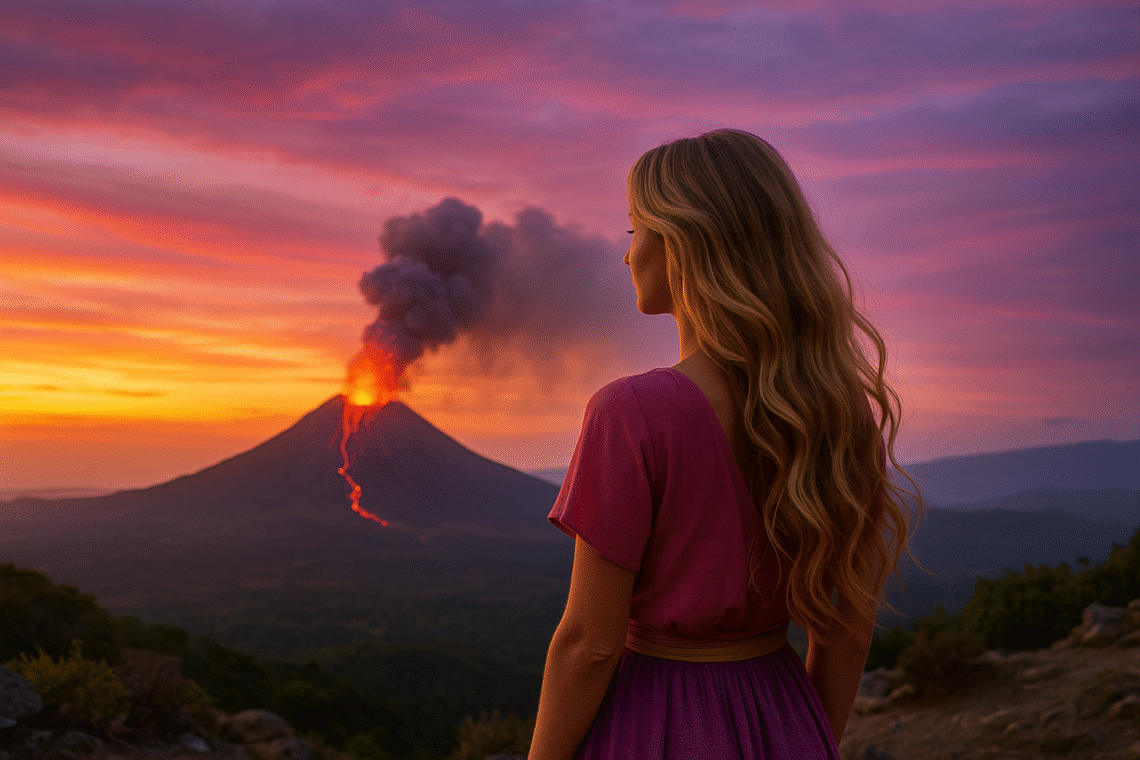
Eruptive Wonders: The Power and Mystery of Volcanoes
There’s something irresistibly captivating about volcanoes. Towering over landscapes with quiet authority or erupting in a spectacle of fire and ash, they are among Earth’s most powerful and mysterious natural forces. Whether sleeping giants or active infernos, volcanoes shape our world both literally and figuratively. Their very presence demands attention, yet what lies beneath their surfaces reveals a rich tapestry of science, history and wonder that continues to inspire and educate.
Volcanoes remind us that the Earth is alive. Beneath our feet, tectonic plates shift and grind, generating heat and pressure that eventually escape through volcanic eruptions. This fiery process creates new land, fertilises soil and even affects the climate. Entire ecosystems are born from volcanic activity, and some of the world’s most fertile regions owe their richness to ancient eruptions. Volcanoes, in many ways, are nature’s reset buttons – unpredictable, creative and destructive all at once.
For centuries, civilisations have both feared and revered these eruptive wonders. From ancient myths to modern-day scientific study, volcanoes have captured human imagination like few other natural phenomena. The idea that molten rock can burst from the Earth with such fury is both terrifying and awe-inspiring. Stories of Pompeii, Mount Tambora and Eyjafjallajökull are not only part of history lessons but serve as vivid reminders of nature’s unpredictable power.
This blog post is your invitation to explore the depths of these remarkable structures. We’ll uncover what volcanoes are made of, how they form and erupt, and look at famous examples that have made their mark on history and science. You’ll discover the beauty behind lava flows, the rhythm of tectonic activity and the many educational opportunities volcanoes provide for curious minds of all ages.
At Janie’s Balanced Path, education is about more than just facts – it’s about sparking curiosity, encouraging exploration and making learning a journey of discovery. Volcanoes are a perfect example of how the natural world offers endless opportunities to think, wonder and grow. Whether you’re a student, teacher or lifelong learner, this post is designed to ignite your interest and deepen your understanding of Earth’s eruptive wonders.
Let’s begin this fascinating journey to the centre of one of nature’s most awe-inspiring phenomena – the mighty volcano.
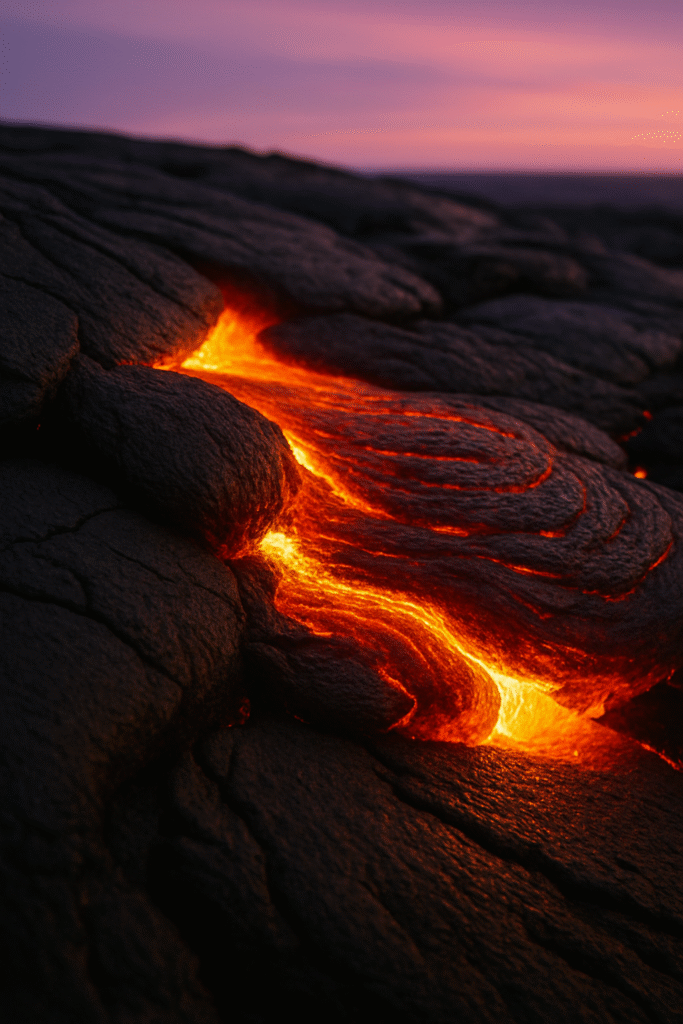
How Volcanoes Work
At their core, volcanoes are openings in the Earth’s crust that allow molten rock, ash and gases to escape from deep beneath the surface. But what gives rise to these formidable formations? The answer lies in the dynamic dance of tectonic activity taking place beneath our feet.
The Earth’s outer shell, known as the lithosphere, is divided into large sections called tectonic plates. These plates float atop a more fluid layer called the mantle. When plates move, they can either collide, pull apart or slide past each other. It’s at these junctions where volcanoes most commonly form. When one plate is forced beneath another – a process known as subduction – immense heat and pressure cause parts of the descending plate to melt, creating magma. This molten rock, lighter than the surrounding solid rock, rises through cracks and weaknesses in the crust, forming a magma chamber.
As magma accumulates, gases within it begin to expand. Eventually, pressure builds to a critical point, causing an eruption. Depending on the magma’s composition and viscosity, eruptions can be explosive, spewing ash and lava high into the sky, or effusive, where lava flows steadily out of the crater. Each eruption is a striking reminder of the Earth’s inner workings.
The structure of a typical volcano includes several key parts: the magma chamber deep below the surface, a main vent or conduit through which magma travels, and the crater at the summit from which lava and gases are released. Some volcanoes also have secondary vents and lava domes, adding to their complexity and grandeur.
Lava flows, although dangerous, are also strangely beautiful. They shape landscapes, create new land and often become fertile grounds once cooled and broken down. Volcanic ash, while disruptive to air travel and health, enriches soil and supports diverse ecosystems. Every eruption tells a story of Earth’s constant evolution.
Volcanoes are not only eruptive wonders, but they’re also vital clues in understanding our planet’s past and future. Studying them helps scientists predict eruptions, protect communities and uncover insights into Earth’s internal structure.
At Janie’s Balanced Path, we value knowledge that connects us to the Earth. Understanding volcanoes is more than geology – it’s about recognising our planet’s raw, transformative energy and our place within its grand narrative.
Famous Volcanoes and Their Stories
Throughout history, certain volcanoes have risen to fame not only for their explosive eruptions but for the powerful stories they’ve left behind. Each one stands as a testament to nature’s force and humanity’s fascination with the eruptive wonders of the Earth. Let’s explore three volcanoes that continue to captivate scientists, historians and adventurers alike.
Mount Vesuvius, nestled near Naples in Italy, is perhaps the most infamous volcano in the world. Its catastrophic eruption in 79 AD buried the Roman cities of Pompeii and Herculaneum beneath ash and pumice. What makes Vesuvius remarkable is not just the scale of destruction, but the insight it offers into ancient Roman life. Archaeologists have uncovered homes, frescoes and even loaves of bread preserved in time. Vesuvius is still active today, a looming reminder of potential future eruptions and the raw unpredictability of lava flows.
Mauna Loa, located on the Big Island of Hawaii, is the largest volcano on Earth in terms of volume. Unlike Vesuvius, Mauna Loa is known for its gentle, effusive eruptions, where lava flows steadily rather than explosively. These lava flows create vast new landscapes and are a central part of Hawaiian culture and geology. Mauna Loa has erupted more than 30 times in the last 200 years, its most recent event being a significant yet non-lethal reminder of Earth’s living surface.
Then there’s Eyjafjallajökull, the Icelandic volcano that gained global attention in 2010. Despite being relatively small, its eruption sent a cloud of volcanic ash across Europe, grounding thousands of flights and disrupting international travel for weeks. It was a dramatic display of how even a minor eruption can have massive worldwide effects. Eyjafjallajökull also sparked renewed interest in tectonic activity and the interconnectedness of Earth systems.
These volcanoes each hold a unique place in Earth’s story. From the historical horror of Vesuvius to the sprawling beauty of Mauna Loa and the global shockwave of Eyjafjallajökull, they are more than geological features – they’re living legends. Through them, we learn not just about the science of eruptions but the human stories that surround them.
At Janie’s Balanced Path, sharing these volcanic facts brings education to life. Understanding the stories behind eruptive wonders deepens our appreciation for both the science and the soul of our world.
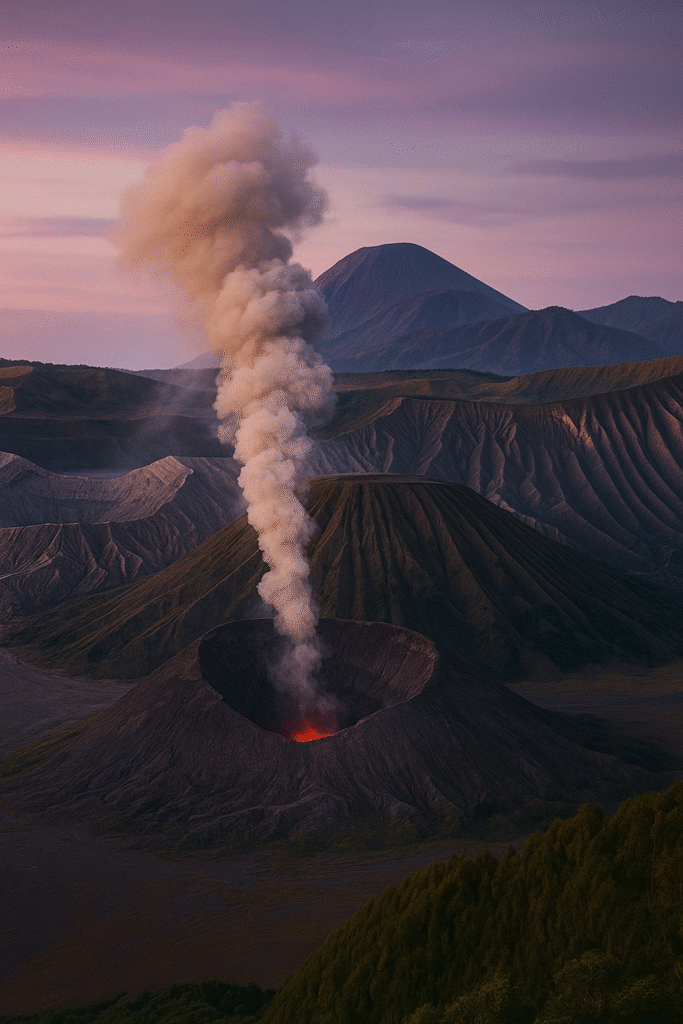
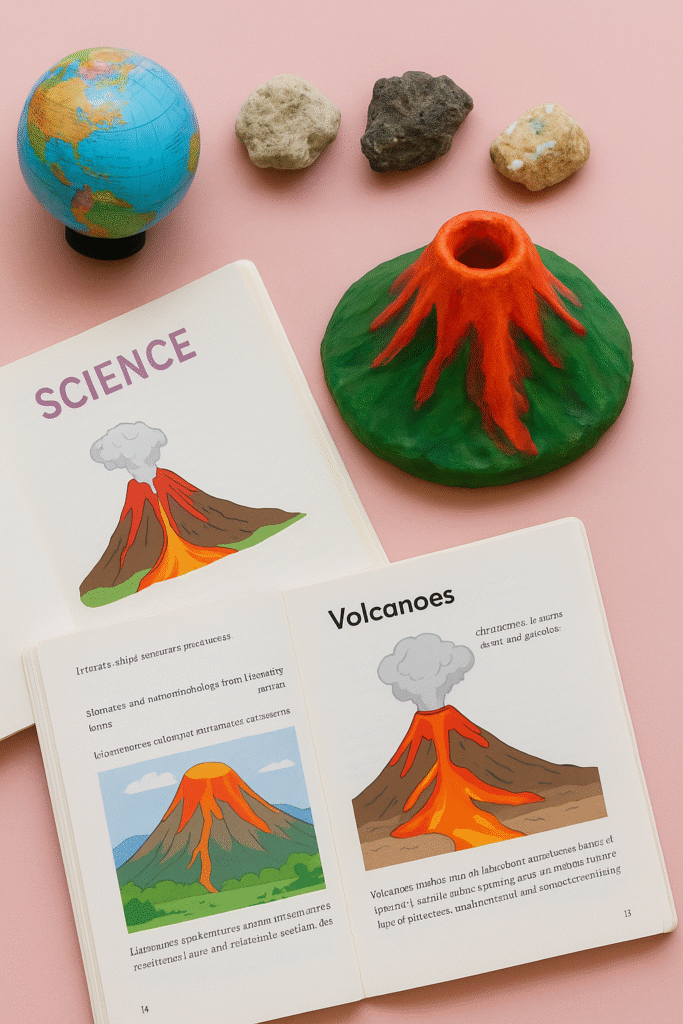
Volcanoes in Education and Learning
Volcanoes hold a unique position in education – they are both visually dramatic and scientifically rich, making them a favourite topic across classrooms and learning environments. Whether through hands-on experiments, virtual simulations or field studies, volcanoes ignite curiosity in learners of all ages.
In primary education, volcanoes are often introduced as part of geography or science units. Children may build paper mâché models that mimic eruptions using baking soda and vinegar, offering a fun and memorable introduction to Earth science. These creative projects not only demonstrate volcanic activity but also help embed scientific terms like magma, lava, eruption and crater in a meaningful context. The blend of art and science encourages engagement and aids retention.
As learners progress to secondary education, the focus deepens. Students explore tectonic activity, types of volcanoes and the geological forces that drive them. Diagrams and animations show how magma rises through the Earth’s crust, and case studies of real eruptions provide opportunities for critical thinking. Discussions around the human and environmental impacts of volcanoes help link scientific understanding with social and ethical considerations.
Volcanoes are also a popular topic in STEM enrichment activities. Robotics kits simulate volcano monitoring tools, coding lessons help interpret seismic data and field trips to volcanic regions or museums offer immersive learning experiences. These experiences spark an interest in Earth sciences and related careers, nurturing future geologists, engineers and researchers.
The visual and emotional power of volcanoes also makes them ideal for cross-curricular learning. Literature classes explore mythologies surrounding volcanoes, history lessons delve into events like Pompeii and art sessions capture the vibrant colours and movement of lava flows. This interdisciplinary approach helps students see the interconnectedness of knowledge – a principle central to Janie’s Balanced Path.
Moreover, volcanoes serve as powerful metaphors in emotional education. Their unpredictability mirrors our own feelings, and their ability to create new land from destruction reflects resilience. Educators often use this symbolism to support discussions around change, emotional regulation and growth.
By making volcanoes more than just a unit of study, we transform them into gateways for exploration, creativity and critical thinking. At Janie’s Balanced Path, we believe in harnessing natural phenomena to inspire a lifelong love of learning – and few topics do that better than the awe-inspiring world of volcanoes.
Volcanoes are more than dramatic natural spectacles; they are teachers, storytellers and mirrors of our own resilience. Their fiery eruptions, shifting landscapes and regenerative power offer a unique perspective on how destruction can lead to rebirth. As we’ve seen throughout this post, volcanoes invite us to understand the Earth not as a static planet, but as a living, evolving force.
The study of volcanoes reveals how deeply interconnected our world is. Tectonic activity in one region can influence weather patterns across continents. A single eruption can impact climate, disrupt lives and spark international dialogue. These ripple effects remind us that nothing on Earth exists in isolation. In the same way, learning about volcanoes connects disciplines – science, history, art and emotion all find relevance in their story.
Reflecting on these eruptive wonders brings awareness to the immense power within the planet and within ourselves. Volcanoes teach us about tension and release, about the need to channel inner pressure constructively. Just like magma builds silently before an eruption, so too do emotions, ideas and change build within us before transforming our lives. This metaphor of internal energy seeking outward expression aligns beautifully with the ethos of Janie’s Balanced Path – a journey of awareness, growth and balance through understanding.
Educationally, volcanoes offer one of the most engaging ways to foster critical thinking and curiosity. Their unpredictability challenges learners to ask deeper questions, to problem-solve and to make connections across fields of study. For educators and parents, volcanoes provide a rich topic to nurture both academic and emotional development.
Perhaps the most powerful lesson volcanoes offer is acceptance of change. Landscapes altered by lava flows eventually bloom again. Communities rebuild. Scientists refine predictions. From each eruption, the Earth reshapes itself – just as we do through our life experiences.
In embracing the mystery and might of volcanoes, we also embrace our capacity to adapt, learn and transform. Their stories, like our own, are marked by moments of upheaval followed by renewal. Whether gazing at a quiet cone on the horizon or marvelling at a fiery eruption, we are reminded of nature’s ability to create, destroy and begin again.
Thank you for joining Janie’s Balanced Path on this journey through the world of volcanoes – a journey not just across landscapes, but into the core of what it means to evolve with strength and purpose.


You May Also Like

Shaken Minds: Understanding Earthquakes with Empowered Awareness
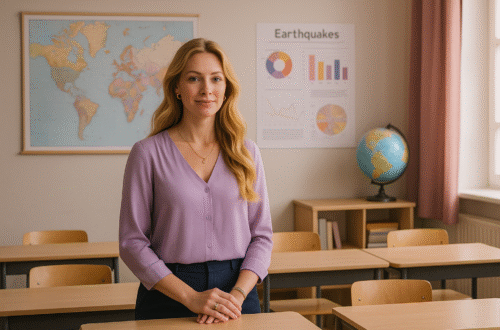
Tremor Legends: Unfolding the Stories of Earth’s Most Famous Quakes

